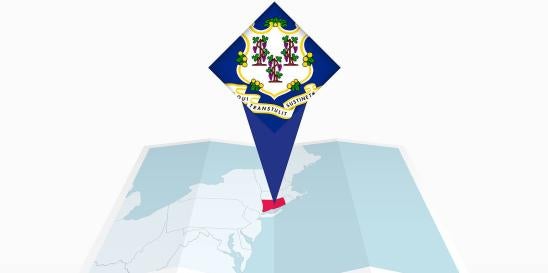Earlier this year, the Connecticut Department of Energy and Environmental Protection (DEEP) released a “Connecticut Environmental Justice Public Participation Guidance Document” (‘the Guidance”) concerning the 2023 amendments to Connecticut’s environmental justice (EJ) statute regarding permitting or other approvals for certain facilities. Although helpful in indicating DEEP’s interpretation of the amended statute (which is not a model of legislative clarity), the Guidance leaves open many questions and raises some new ones. Beyond the Guidance, however, DEEP recently announced a general schedule for developing regulations to implement the most significant part of the amendments: cumulative impact assessments.
Background
Since its adoption in 2009, Connecticut’s EJ statute (Conn. Gen. Stat. § 22a-20a) has applied to “affecting facilities” that are located in or proposed to be located in an “environmental justice community” (both terms defined by the statute) and that apply to DEEP for a new or expanded permit, or to the Connecticut Siting Council for a Certificate of Environmental Compatibility and Public Need. For such facilities, the statute has required applicants to develop and implement a “meaningful public participation plan” and potentially enter into a “community environmental benefit agreement” (CEBA) between the applicant and the host municipality to mitigate potential environmental impacts of the affecting facility.
The 2023 amendments (Public Act 23-202) became effective on October 1, 2023. The amendments primarily do two things: (1) further enlarge applicant obligations concerning public participation, and most significantly, (2) make an assessment of the cumulative impact of “environmental and public health stressors” a new element in reviewing – and potentially denying – “affecting facility” applications. However, the amendments state that the cumulative impact assessment features shall not take effect until DEEP has adopted implementing regulations. The statute also requires DEEP to consult with stakeholders in this effort.
Public Participation Guidance
The recent Guidance addresses only the enhanced public participation features of the 2023 amendments and expressly does not address the cumulative impact assessments. It simply states that the development of the cumulative impact regulations will “take time.” The 2023 amendments also call for DEEP to adopt implementing regulations for the enhanced public participation features. However, the Guidance does not address such regulations or provide a timeline for their implementation.
The Guidance does highlight new requirements regarding public participation and presents DEEP’s integrated understanding of such requirements. Much of this understanding is straightforward. For example, “affecting facility” applicants must now not only prepare and receive DEEP approval for a “meaningful public participation plan” before filing the application in question but must also prepare and receive DEEP approval for a report regarding the results of such public outreach in order for the application to be deemed sufficient.
Beyond that, Goal 8 of DEEP’s recently announced “20BY26” plan includes several steps that DEEP plans to take regarding the enhanced public participation under the 2023 amendments, including:
- Making all EJ public participation plans and CEBAs publicly available, including those that DEEP has previously received.
- “Produc[ing] other tools … [to] facilitate efficiency and engagement,” such as more guidance to clarify how DEEP permitting and other programs interact with EJ communities, and to highlight opportunities for public participation in DEEP programs.
While much of the Guidance is relatively straightforward, certain statements appear to range beyond the 2023 amendments. For example, it states that the EJ statute would apply to the addition of a new unit “resulting in [emissions of] fifteen (15) tons or more per year [TPY] of any individual air pollutant.” It is not clear how the 15 TPY threshold, which one may reasonably assume is a reference to the DEEP air permit program for non-major sources in various parts of state regulation § 22a-174-3a, is consistent with the statute’s restriction of “affecting facility” to include only a “major source” of air pollution. As defined in the 2023 amendments, “major source” means “a major source of air pollution, as defined by the federal Clean Air Act or … [DEEP regulations],” or that has actual or potential emissions exceeding 100 TPY or other applicable Clean Air Act criteria, which typically are far beyond the non-major source thresholds in the DEEP air permit program.
For another example, the Guidance notes that the EJ statute exempts “minor modifications,” but also states without qualification that the statute applies to an alteration of a facility that “may result in the discharge of any new water, substance or material.” (Emphasis added). These examples underline that (as it itself notes) the Guidance is not a substitute for the statute itself.
Lastly, the Guidance does not address what DEEP envisions as a “reasonable fee” that the statute authorizes DEEP to charge “affecting facility” applicants to cover the cost of implementing the amended program.
Ultimately, while the Guidance is useful to some degree, the full impact of Public Act 23-202 will not be known until DEEP develops implementing regulations for the enhanced public participation requirements and particularly for cumulative impact assessments.
Development of Cumulative Impact Regulations
In early March, DEEP announced an overall scheme and schedule for adopting cumulative impact regulations as Goal 7 in DEEP’s “20BY26” plan:
- Hold “listening sessions” in EJ communities and with regulated parties (throughout 2024).
- Release a Request for Proposals to develop “the ‘cumulative impacts tool’ that ultimately will give businesses the information that they can rely on to design, from the start, successful permit applications” (early 2024).
- Propose “a strong but flexible set of rules” for public comment (late 2025).
Interested parties would be well-advised to watch for opportunities for stakeholder involvement in these efforts as DEEP continues to implement the 2023 amendments. Those who are particularly interested can also sign up to receive DEEP’s Equity and Environmental Justice Newsletter, which includes timely updates on upcoming opportunities and events from DEEP’s Office of Equity and Environmental Justice.




 i
i


